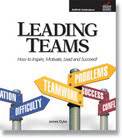In the last installment, we explored these three elements as roles and discovered that we are likely to function in any of them, depending on the circumstances and demands of the situation. The key is to be aware of what role we are assuming and to access the appropriate skills demanded by that role.
Now we are going to explore these roles as LEVELS in the hierarchy of an organization and see how different levels require more or less of each individual ROLE. ONCE AGAIN, we must embrace the blurred lines that exist between each level.
For example…
DOERS become more effective when they develop skills associated with MANAGERS (developing good judgement; managing their time effectively; problem-solving; and regulating their own work quality). In turn, MANAGERS become more effective when they develop skills associated with LEADERS (communication; conflict resolution; collaboration; motivating and inspiring team members). With this in mind, let’s explore each LEVEL of an organization…
DOERS are needed at the front-line of every organization. Employees who serve customers and consumers directly are required to do a lot of DOING—filling orders; responding to customer needs; supporting demands from colleagues in other departments; solving customer problems; meeting deadlines; and filling their day with an exhausting to-do list of tasks.
MANAGERS (often with the title, “supervisor”) function at the next level. They still have a lot DOING to do—meetings to attend; reports to file; emails to answer; phone calls to return. But they must also make time to MANAGE—to improve the work climate with constant performance oversight, affirming good work and addressing bad; lobbying higher-ups on behalf of their team; running interference with THEIR boss and other departments; resolving employee conflict; shuffling priorities; and distributing workload effectively and fairly.
One of the major challenges of MANAGING is to avoid succumbing to the seduction of DOING. Many a manager has longed for the simplicity of their old job—the DOING level and role—that didn’t demand attention to the messier arena of unruly relationships with difficult employees, obstinate colleagues, or disagreeable clients!
For many MANAGERS, the work of DOING is a comfort zone—the familiar tasks they mastered before they were promoted. In fact, many skilled DOERS refuse to accept promotions when offered, because they know they will have to abandon the work they enjoy and embrace the very different work of a MANAGER, much of which demands a different set of skills; use of time; and focus of energy and attention.
LEADERS exist at higher, executive levels in the organization. Like MANAGERS at lower levels, they also have the responsibility to oversee the work of direct reports and ensure the continued effective functioning of the organization. However, one may argue persuasively that they are custodians of the FUTURE of the organization. It is a primary responsibility of high-level LEADERS to chart the course of the organization successfully into the future—to anticipate what is needed to adapt to the changing world OUTSIDE the organization—to ensure the continued relevance and success of the organization.
Surprisingly, their authority at these levels is not as compelling as many think! In fact, executives quickly find that their power as an executive no longer comes from positional authority, but relies instead on their ability to persuade, influence, collaborate, and build consensus.

— Image by © Royalty-Free/Corbis
In fact, LEADERS are required—more often than not—to be tactful diplomats rather than commanding generals. They discover that they are now in the business of building cooperative relationships across diverse divisional boundaries. And yet, at strategic moments, they find that they are required to move beyond diplomacy to become forceful and persuasive—to address a situation that needs correction and bring about productive change.
This is often when MANAGING becomes a comfort zone for LEADERS. Many managers who have been required to initiate change or provide strategic leadership have preferred to step back into the safer role and environment of MANAGING, where the risks (and stakes) of maintaining the status quo are lower and less demanding. ON THE OTHER HAND…
No one is a LEADER all the time! Experts agree, if you spend all your time in the LEADER role, it can be as bad as missing it altogether. Here’s how management expert Robert Sutton expressed this, in a Harvard Business Review article from 2010…
I am not rejecting the distinction between leadership and management, but I am saying that the best leaders do something that might properly be called a mix of leadership and management. At a minimum, they lead in a way that constantly takes into account the importance of management. Meanwhile, the worst senior executives use the distinction between leadership and management as an excuse to avoid the details they really have to master to see the big picture and select the right strategies.
Here is the takeaway for us all: Be prepared to function in whatever role the situation demands. And be committed to accessing the appropriate skills (we made that point in the previous issue). MOREOVER, recognize that as your position (or level) within the organization changes—presumably through advancement and promotion—the demands of your new role will change as well. Will you be ready for these new demands? That is the focus of the next installment—don’t miss it!
Until next time… Yours for better leaders and better organizations,
Dr. Jim Dyke – “The Boss Doctor” ™ helping you to BE a better boss and to HAVE a better boss!




